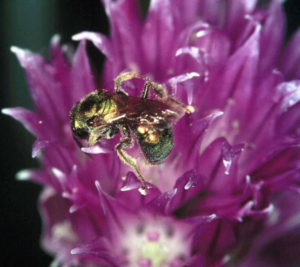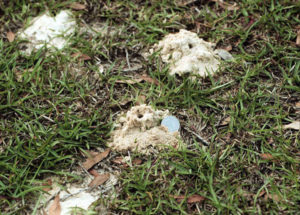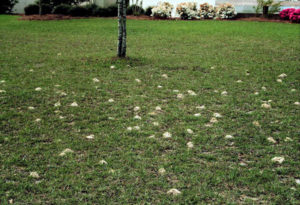ALERT Ground Nesting Bees
go.ncsu.edu/readext?474938
en Español / em Português
El inglés es el idioma de control de esta página. En la medida en que haya algún conflicto entre la traducción al inglés y la traducción, el inglés prevalece.
Al hacer clic en el enlace de traducción se activa un servicio de traducción gratuito para convertir la página al español. Al igual que con cualquier traducción por Internet, la conversión no es sensible al contexto y puede que no traduzca el texto en su significado original. NC State Extension no garantiza la exactitud del texto traducido. Por favor, tenga en cuenta que algunas aplicaciones y/o servicios pueden no funcionar como se espera cuando se traducen.
Português
Inglês é o idioma de controle desta página. Na medida que haja algum conflito entre o texto original em Inglês e a tradução, o Inglês prevalece.
Ao clicar no link de tradução, um serviço gratuito de tradução será ativado para converter a página para o Português. Como em qualquer tradução pela internet, a conversão não é sensivel ao contexto e pode não ocorrer a tradução para o significado orginal. O serviço de Extensão da Carolina do Norte (NC State Extension) não garante a exatidão do texto traduzido. Por favor, observe que algumas funções ou serviços podem não funcionar como esperado após a tradução.
English
English is the controlling language of this page. To the extent there is any conflict between the English text and the translation, English controls.
Clicking on the translation link activates a free translation service to convert the page to Spanish. As with any Internet translation, the conversion is not context-sensitive and may not translate the text to its original meaning. NC State Extension does not guarantee the accuracy of the translated text. Please note that some applications and/or services may not function as expected when translated.
Collapse ▲March and April are the typical months to notice the activity of ground-nesting bees in turf. Ground nesting bee activity in turf has already begun despite the cool, wet weather this spring. These small solitary bees form a small mound of soil with a pencil-sized entrance hole and their activity sometimes causes concern. Each bee nests singly, but they often are found in aggregations or groups where the turf is thin. Colony-type nesting areas are often located on south facing slopes, but can also occur in flat areas.
There are many species of ground nesting bees, and the date they emerge and become active can vary substantially with the type of bee and the geographic location of the site. Expect more activity as soil temperatures warm and other types of ground-nesting bees emerge.
These bees generally don’t sting and present little danger to man. Both the mounds and bees will disappear within a few weeks, and normally do not require control. Chemical treatments are usually not necessary, but there are some options. Nonchemical deterrents include heavy watering, or tilling and heavy mulch in landscape beds.
For more information on ground-nesting bees, please see the TurfFiles publication, Ground-Nesting Bees in Turf.





